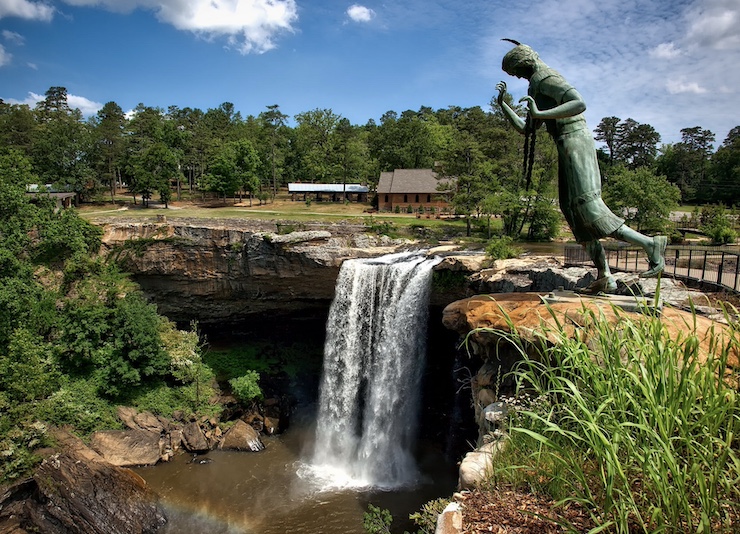Alabama Drone Conference Highlights Role of UAVs in Precision Agriculture

A drone conference in Alabama scheduled for February 26-29 will highlight the role of UAVs in “precision” agriculture – a rapidly growing field that features drones equipped with advanced sensors that spray seeds, fertilizer and pesticides to targeted areas of a farm to maximize crop yields.
The organizer of the conference, Steve Li, is a weed scientist with the Alabama Cooperative Extension System which is based at Alabama A&M and Auburn universities. He’s widely considered one of the leading U.S. pioneers in the field, with numerous awards and research grants, including commodity grants from Alabama Farmers Federation, the National Peanut Board and companies in the crop protection industry, including Bayer and Syngenta.
Last year, Li’s research team conducted a whirlwind of drone research worldwide: 100 field trials and 42 live-drone demonstrations which reached more than 150,000 people across 25 countries and six continents.
“Three years ago, we began working with drones and precision technologies,” Li says. “Now, we are heavily focused on delivering crop protection chemicals — including herbicide, fungicides and insecticides — as well as other chemicals that farmers typically use on the farm with these new technologies.”
Research has shown that farm drones can provide a comprehensive map of a farm to detect areas of maximum soil fertility as well as crop stress. Using the map the drones can be programmed to apply farm inputs in precise measures and locations to have the maximum effect on crop growth.
Drone operations are not only faster and more accurate than traditional field survey methods, but they also conduct the work with fewer carbon emissions than conventional aircraft and road vehicles and with less risk of physical injury to field workers and pilots.
Other drone advantages are ease of storage and transport and reduced repair and maintenance costs
“Drones are much less expensive than ground sprayers and airplanes, the maintenance required is low, they are simple to repair and change parts without special training and knowledge, and it is easy to transport drones on highways, roads and over long distances,” Li says.
Li admits that farm drones do have their liabilities, primarily their limited battery power which can interfere with continuous mapping and spraying and reduce drone efficiency. However, the main obstacles to industry growth are limited drone purchase options, prohibitive hardware costs and continuing regulatory restrictions, he says.
Li sponsored the first “Spray Drone End User” conference in 2023. It was attended by more than 200 farmers, agricultural scientists and farm extension officials. He’s expecting an even larger attendance this year – in part because interest in the field is growing and attendees can also participate in the event virtually.
This year’s conference will feature technical field demonstrations of several of the latest spray drone models, as well as live swath testing. Critical operational issues such as spray drift management – to reduce potential harm from pesticides – and spray drone repair will also be addressed. In addition, officials at the FAA, EPA and state pesticide regulators will report on the latest regulatory challenges facing farm drone operators.
Li is hoping his annual conference can serve as a catalyst for further growth of the drone industry and commercial applications in U.S. agriculture. The US is facing growing competition from other farm countries that have moved more rapidly to incorporate drones into their agricultural operations, in part, due to fewer government regulations and more generous public subsidies, he notes.
For example, 30% of all agricultural spraying in South Korea is now conducted with drones. In Japan, 40% of the nation’s rice crop is sprayed using drones. Despite its vast potential, the US market lags far behind, Li says.
The Association for Uncrewed Vehicle Systems International, a nonprofit trade group, estimates that agriculture could soon account for 80% of the global commercial drone market, but without greater US government support, including subsidized purchase and training opportunities, other countries with the largest farm acreages – China, India and Russia – are likely to dominate the emerging market.
While surveys show that some two-thirds of US farmers are interested in using drones to enhance their farm operations, due to current obstacles, including a lack of widely available training, only a small percentage of farmers actually deploy them.
According to a study by the USDA’s Economic Research Service, barely 5% of U.S. farms currently utilize UAVs to conduct simple aerial surveys, and even fewer are equipped to deploy drones for precision spraying of pesticides and other farm inputs.
|